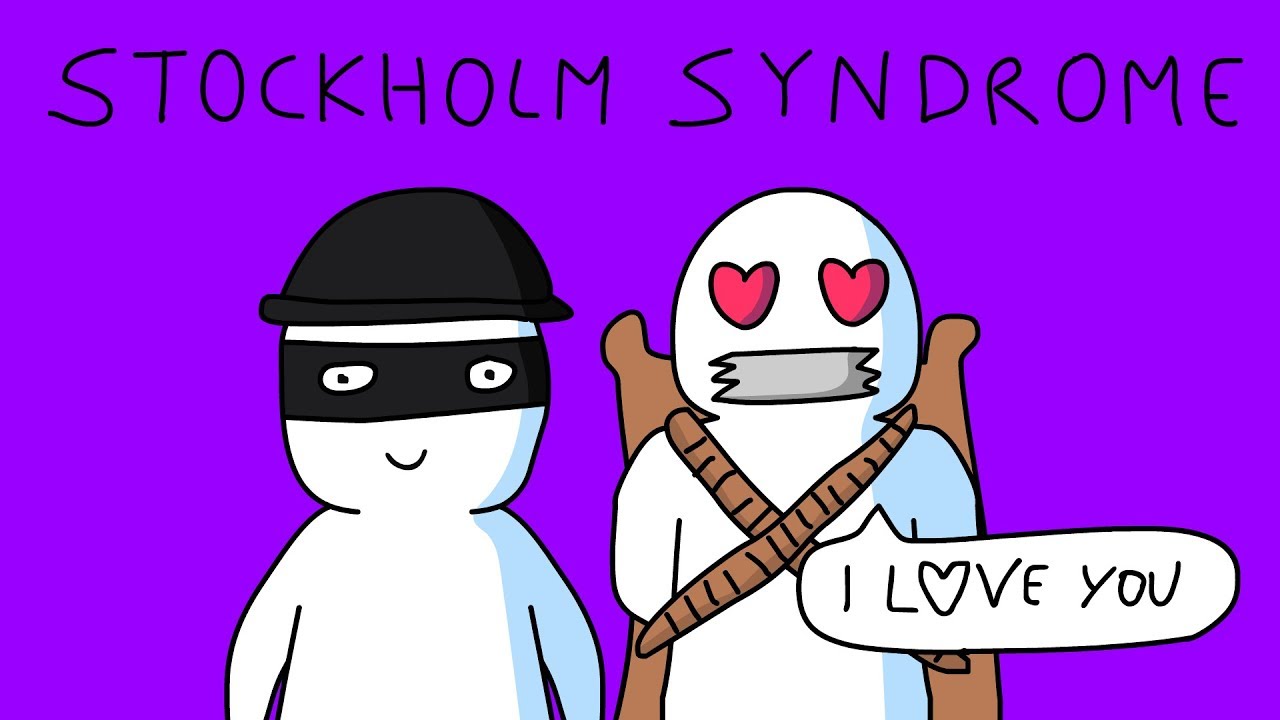One morning, on the 23rd of August, some 47 years ago, an escaped convict in Stockholm, the capital and largest city of Sweden, entered a busy bank carrying a loaded machine gun. In events that unfolded like a Hollywood script, Erik Olsson, the convict, fired at the ceiling and screamed “The party has just begun!”
And really, the party had only just begun. After taking four bank employees’ hostages, he went ahead to make his demands which included $700,000 in Swedish and foreign currency, a getaway car and the release of Clark Olofsson, who was serving time for armed robbery and acting as an accessory in the 1966 murder of a police officer. Within hours, the police delivered Olsson’s fellow convict, the ransom and even a blue Ford Mustang with a full tank of gas. However, authorities refused the robber’s demand to leave with the hostages in tow to ensure safe passage. The unfolding drama captured headlines around the world and played out on television screens across Sweden.
- ‘Exclusion of N/Central women from APC presidential campaign worrisome’
- NGE, BON, MRA ask FG to reverse N5m fine on Trust TV, 3 others
However, that was not the only drama that was happening. While being holed up inside a cramped bank vault, the captives quickly forged a strange bond with their abductors. Olsson was said to have draped a wool jacket over the shoulders of hostage Kristin Enmark when she began to shiver, soothed her when she had a bad dream and gave her a bullet from his gun as a keepsake. The gunman also comforted another captive Birgitta Lundblad when she couldn’t reach her family by phone and told her repeatedly to “Try again; don’t give up.”
By the second day, the hostages were on a first-name basis with their captors, and they started to fear the police more than their abductors. When the police commissioner was allowed inside to inspect the hostages’ health, he noticed that the captives appeared hostile to him but relaxed and jovial with the gunmen. The police chief told the press that he doubted the gunmen would harm the hostages because they had developed a “rather relaxed relationship.”
Even when threatened with physical harm, the hostages still saw compassion in their abductors. After Olsson threatened to shoot Safstrom, the lone male hostage, in the leg to shake up the police, the hostage recounted to The New Yorker, “How kind I thought he was for saying it was just my leg he would shoot.” Enmark tried to convince her fellow hostage to take the bullet: “But Sven, it’s just in the leg.”
Ultimately, the convicts did no physical harm to the hostages, and on the night of August 28, after more than 130 hours, the police pumped teargas into the vault, and the perpetrators quickly surrendered. The police called for the hostages to come out first, but the four captives, protecting their abductors to the very end, refused. Enmark yelled, “No, Jan and Clark go first—you’ll gun them down if we do!”
The hostages’ seemingly irrational attachment to their captors perplexed the public so much so that the police had to investigate whether Enmark had plotted the robbery with Olofsson. The captives were confused, too. The day following her release, Oldgren asked a psychiatrist, “Is there something wrong with me? Why don’t I hate them?”
Even after Olofsson and Olsson returned to prison, the hostages made jailhouse visits to their former captors. An appeals court overturned Olofsson’s conviction, but Olsson spent years behind bars before being released in 1980. Once freed, he married one of the many women who sent him admiring letters while incarcerated, moved to Thailand and in 2009 released his autobiography, entitled Stockholm Syndrome.
Now, in Nigeria, forty-seven years later, we are seeing similar scenarios. Victims of kidnappings, especially those who have been in captivity for long now attempting to justify the actions of their abductors. Some have developed empathy for these vile creatures and are telling the government through the media to listen to these terrorist groups, dialogue and reach an understanding. They claim they were treated ‘well’ and some even report being given expert medical attention.
However, I do not blame the victims. We are all humans, after all.
After the infamous Stockholm siege, Psychiatrists dubbed the strange phenomenon “Stockholm Syndrome”. They described it as a condition in which hostages develop a psychological bond with their captors during captivity. It became part of the popular lexicon in 1974 when it was used as a defence for the kidnapped newspaper heiress Patty Hearst, who assisted her radical Symbionese Liberation Army captors in a series of bank robberies.
However, Stockholm syndrome isn’t really a psychological diagnosis. Instead, it is a way of understanding the emotional response some people have towards a captor or abuser. Sometimes people who are held prisoner or are subject to abuse can have feelings of sympathy or other positive feelings toward the captor. It is akin to ‘brain washing’. Even the most astute or enlightened person can be forced to change his or her perception towards a particular cause when exposed to their reasoning especially when faced with facts. This is what happens when we read or hear about a plight of some people and become empathetic towards them and dub them ‘sympathisers.’ E.g ‘Boko Haram sympathisers’, ‘ISIS sympathisers.’ etc
Years ago, when Mohammed Yusuf newly started preaching, a couple of my classmates used to attend his lectures. One of them recounted to me of how they used to listen to him preach about government’s many failures and how democracy was a fallacy created to lead us to ruin. He backed it all with facts and before long, these young men, impressionable as they were, began to empathize with his ideologies. It continued for a while, until one day, he preached that western education was ‘Haram’ and that for them to enter heaven, they needed to stop going to school. My friend went home, ruminated over his sermon, thought about how much his parents were sacrificing to send him to medical school and how far he had come and quickly pressed the ‘Reset’ button on his brain. That was the day he convinced his friends never to return to Yusuf’s class again.
Like I said, we are humans. Therefore, we are liable to kindness. When humans are shown kindness, most times we respond in kind. Also, these terrorists are not aliens, they are also humans which means that it is possible for them to show kindness to people. It could also be a ploy to brainwash victims into being sympathetic to their plight.
But how can someone be kind to you and then keep you in the forest, demanding a ransom for your release?
We must not lose sight of the magnitude of the crime being perpetrated in the first place. Why do they have to kidnap us at all? Why must we be ransomed and negotiated like cattle in the market? Why must they kill innocent people? Why must they use guns? Why must they rob banks? Why must they deny us peace of mind? Why must they deny us a cheap, reliable and effective means of transportation? Is that really the only way to get government attention?
I have not one ounce of sympathy for these terrorists/kidnappers/bandits or whatever the hell they are called. May they rot in the deepest pit of hell, ameen.

 Join Daily Trust WhatsApp Community For Quick Access To News and Happenings Around You.
Join Daily Trust WhatsApp Community For Quick Access To News and Happenings Around You.

